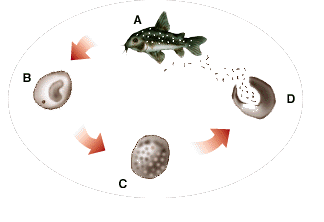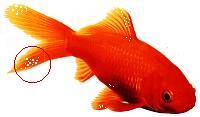Controlling Ich

Ich, also called white spot disease, is one of the most common protozoan infections affecting aquarium and pond fishes. This brief overview of the life cycle will help the aquarist and pond keeper understand more about the problem and assist them in properly treating their fishes.
The term "Ich" comes from the generic name Ichthyophthirius of the species multifilis, which is the freshwater form of white spot disease. The marine protozoan causing white spot disease is Cryptocaryon irritans.
Ich, also called white spot disease, is one of the most common protozoan infections affecting aquarium and pond fishes. This brief overview of the life cycle will help the aquarist and pond keeper understand more about the problem and assist them in properly treating their fishes.
The term "Ich" comes from the generic name Ichthyophthirius of the species multifilis, which is the freshwater form of white spot disease. The marine protozoan causing white spot disease is Cryptocaryon irritans.
The most common way of diagnosing ich is by close observation of the infected fishes. The presence of small, (.5 to 1.0 mm) white dots scattered about on the fishes' skin. This is not always proof that the fish is infected with ich as several other infections can have a similar appearance. Proof positive can be obtained by removing one of the spots and observing it under a microscope. Ich has a small micronucleus and a prominant crescent-shaped macronucleus.
Ich is most often introduced into the aquarium or pond by adding new fishes or aquatic plants. Tomites which have only recently attached themselves to the host will not be readily visible.
It is good aquarium and pond keeping practice to isolate any new fishes for at least four days under close observation. For tropical fishes, maintain a temperature of around 75° F (24° C). Check carefully for the presence of any tell-tale white spots appearing on the skin of the fishes and treat them accordingly. If no white spots are observed on tropical fishes within four days at this temperature, they can be moved from isolation. Remember, fishes maintained at cooler water temperatures (such as pond fishes) will require longer isolation times.
The visible stages of Ich are carried out within the host fishes' skin. The first stages are called trophozoites and are highly resistant to drug therapy. Trophozoites mature into trophonts and leave the host, falling to the bottom of the aquarium or pond.
These mature trophonts release from 200 to 1,000 tomites. The tomites move about looking for a host, which they must find within 2 to 3 days at 75° F (24° C) or they will die. (Cooler temperatures will lengthen this time).
It is this free swimming stage that is most vulnerable to treatment. It is important to note that these intermediate stages may also attach themselves to plants and be accidentally introduced into an aquaruim or pond along with the new plants. Once the tomite attaches to the host, it matures and the cycle begins anew.
